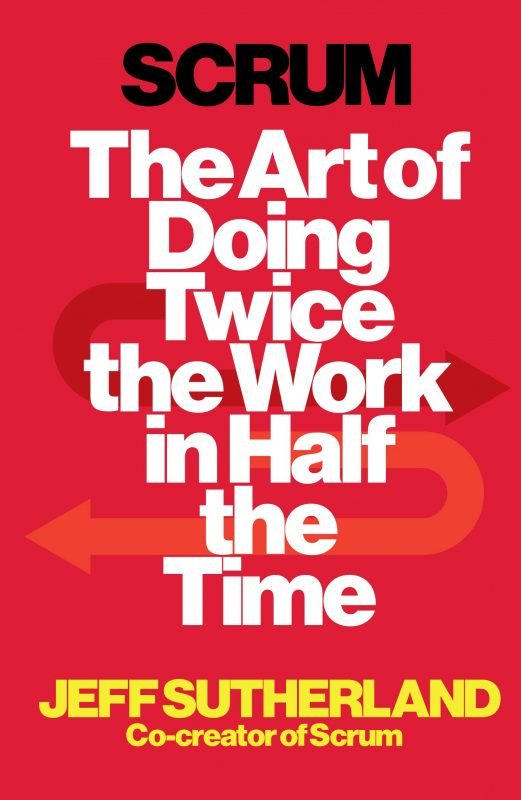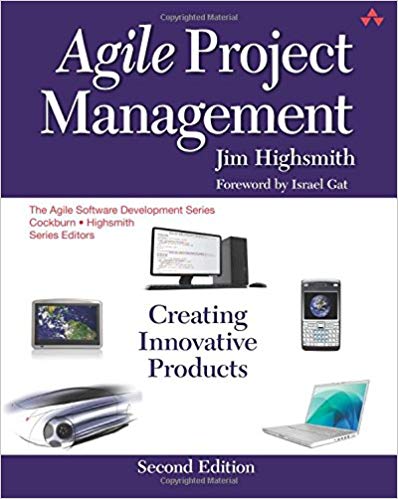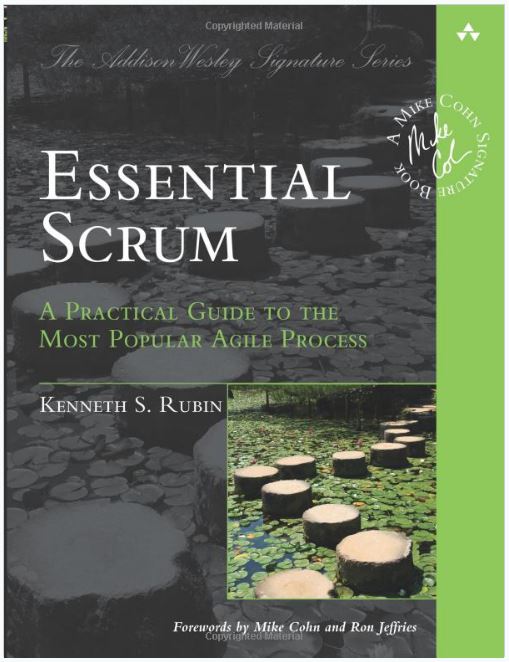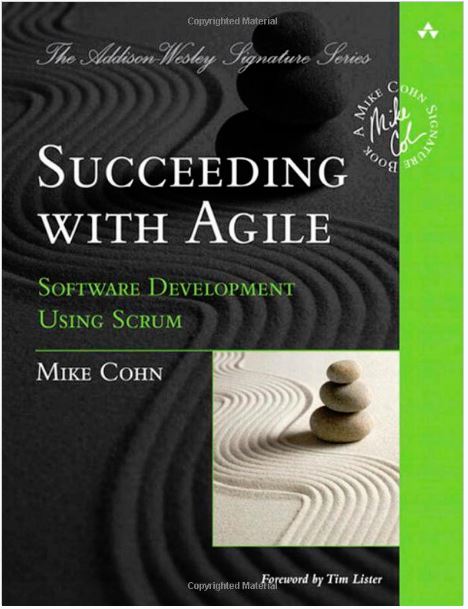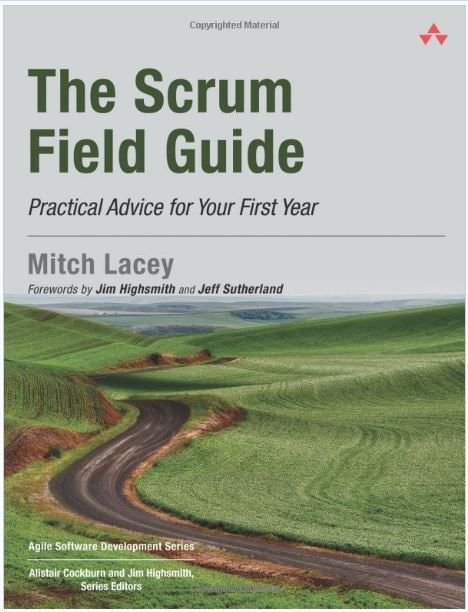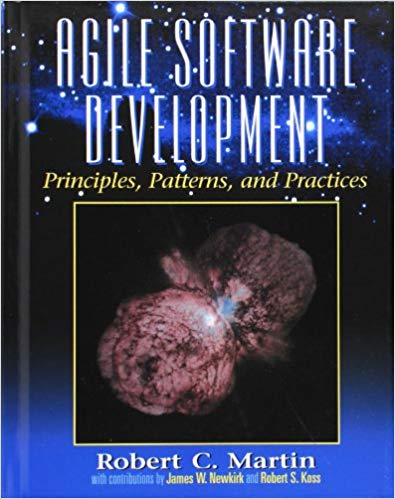Scrum: The Art of Doing Twice the Work in Half the Time
For those who believe that there must be a more agile and efficient way for people to get things done, here is a brilliantly discursive, thought-provoking book about the leadership and management process that is changing the way we live.
In the future, historians may look back on human progress and draw a sharp line designating “before Scrum” and “after Scrum.” Scrum is that ground-breaking. It already drives most of the world’s top technology companies. And now it’s starting to spread to every domain where leaders wrestle with complex projects.
If you’ve ever been startled by how fast the world is changing, Scrum is one of the reasons why. Productivity gains of as much as 1200% have been recorded, and there’s no more lucid – or compelling – explainer of Scrum and its bright promise than Jeff Sutherland, the man who put together the first Scrum team more than twenty years ago.
The thorny problem Jeff began tackling back then boils down to this: people are spectacularly bad at doing things with agility and efficiency. Best laid plans go up in smoke. Teams often work at cross purposes to each other. And when the pressure rises, unhappiness soars. Drawing on his experience as a West Point-educated fighter pilot, biometrics expert, early innovator of ATM technology, and V.P. of engineering or CTO at eleven different technology companies, Jeff began challenging those dysfunctional realities, looking for solutions that would have global impact.
In this book you’ll journey to Scrum’s front lines where Jeff’s system of deep accountability, team interaction, and constant iterative improvement is, among other feats, bringing the FBI into the 21st century, perfecting the design of an affordable 140 mile per hour/100 mile per gallon car, helping NPR report fast-moving action in the Middle East, changing the way pharmacists interact with patients, reducing poverty in the Third World, and even helping people plan their weddings and accomplish weekend chores.
Woven with insights from martial arts, judicial decision making, advanced aerial combat, robotics, and many other disciplines, Scrum is consistently riveting. But the most important reason to read this book is that it may just help you achieve what others consider unachievable – whether it be inventing a trailblazing technology, devising a new system of education, pioneering a way to feed the hungry, or, closer to home, a building a foundation for your family to thrive and prosper.
More info →Agile Project Management: Creating Innovative Products
Best practices for managing projects in agile environments—now updated with new techniques for larger projects
Today, the pace of project management moves faster. Project management needs to become more flexible and far more responsive to customers. Using Agile Project Management (APM), project managers can achieve all these goals without compromising value, quality, or business discipline. In Agile Project Management, Second Edition, renowned agile pioneer Jim Highsmith thoroughly updates his classic guide to APM, extending and refining it to support even the largest projects and organizations.
Writing for project leaders, managers, and executives at all levels, Highsmith integrates the best project management, product management, and software development practices into an overall framework designed to support unprecedented speed and mobility. The many topics added in this new edition include incorporating agile values, scaling agile projects, release planning, portfolio governance, and enhancing organizational agility. Project and business leaders will especially appreciate Highsmith’s new coverage of promoting agility through performance measurements based on value, quality, and constraints.
This edition’s coverage includes:
- Understanding the agile revolution’s impact on product development
- Recognizing when agile methods will work in project management, and when they won’t
- Setting realistic business objectives for Agile Project Management
- Promoting agile values and principles across the organization
- Utilizing a proven Agile Enterprise Framework that encompasses governance, project and iteration management, and technical practices
- Optimizing all five stages of the agile project: Envision, Speculate, Explore, Adapt, and Close
- Organizational and product-related processes for scaling agile to the largest projects and teams
- Agile project governance solutions for executives and management
- The “Agile Triangle”: measuring performance in ways that encourage agility instead of discouraging it
- The changing role of the agile project leader
Essential Scrum: A Practical Guide to the Most Popular Agile Process
A Practical Guide to the Most Popular Agile Process
The Single-Source, Comprehensive Guide to Scrum for All Team Members, Managers, and Executives
If you want to use Scrum to develop innovative products and services that delight your customers, Essential Scrum is the complete, single-source reference you’ve been searching for. Leading Scrum coach and trainer Kenny Rubin illuminates the values, principles, and practices of Scrum, and describes flexible, proven approaches that can help you implement it far more effectively.
Whether you are new to Scrum or years into your use, this book will introduce, clarify, and deepen your Scrum knowledge at the team, product, and portfolio levels. Drawing from Rubin’s experience helping hundreds of organizations succeed with Scrum, this book provides easy-to-digest descriptions enhanced by more than two hundred illustrations based on an entirely new visual icon language for describing Scrum’s roles, artifacts, and activities.
Essential Scrum will provide every team member, manager, and executive with a common understanding of Scrum, a shared vocabulary they can use in applying it, and practical knowledge for deriving maximum value from it.
More info →Succeeding with Agile: Software Development Using Scrum
This is the definitive, realistic, actionable guide to starting fast with Scrum and agile–and then succeeding over the long haul. Leading agile consultant and practitioner Mike Cohn presents detailed recommendations, powerful tips, and real-world case studies drawn from his unparalleled experience helping hundreds of software organizations make Scrum and agile work.
Succeeding with Agile is for pragmatic software professionals who want real answers to the most difficult challenges they face in implementing Scrum. Cohn covers every facet of the transition: getting started, helping individuals transition to new roles, structuring teams, scaling up, working with a distributed team, and finally, implementing effective metrics and continuous improvement.
Throughout, Cohn presents “Things to Try Now” sections based on his most successful advice. Complementary “Objection” sections reproduce typical conversations with those resisting change and offer practical guidance for addressing their concerns. Coverage includes
- Practical ways to get started immediately–and “get good” fast
- Overcoming individual resistance to the changes Scrum requires
- Staffing Scrum projects and building effective teams
- Establishing “improvement communities” of people who are passionate about driving change
- Choosing which agile technical practices to use or experiment with
- Leading self-organizing teams
- Making the most of Scrum sprints, planning, and quality techniques
- Scaling Scrum to distributed, multiteam projects
- Using Scrum on projects with complex sequential processes or challenging compliance and governance requirements
- Understanding Scrum’s impact on HR, facilities, and project management
Whether you've completed a few sprints or multiple agile projects and whatever your role–manager, developer, coach, ScrumMaster, product owner, analyst, team lead, or project
lead–this book will help you succeed with your very next project. Then, it will help you go much further: It will help you transform your entire development organization.
The Scrum Field Guide: Practical Advice for Your First Year
Mitch Lacey, founder of Mitch Lacey & Associates, Inc., helps companies reach their maximum potential by building high-performing organizations through the adoption of agile practices, including Scrum and XP. Mitch's rich, practical experience and his pragmatic approach are trusted by many companies including Adobe Systems, Aera Energy, Bio-Rad, EchoStar, Microsoft, Oracle, Qualcomm, Salem Hospital, SAP, Sony, and more. He is a CST, a PMI Project Management Professional (PMP), and an Agile Certified Practitioner (ACP). Mitch has served on the board of directors for the Agile Alliance and the Scrum Alliance. Learn more at MitchLacey.com.
More info →Agile Software Development, Principles, Patterns, and Practices
Written by a software developer for software developers, this book is a unique collection of the latest software development methods. The author includes OOD, UML, Design Patterns, Agile and XP methods with a detailed description of a complete software design for reusable programs in C++ and Java. Using a practical, problem-solving approach, it shows how to develop an object-oriented application—from the early stages of analysis, through the low-level design and into the implementation. Walks readers through the designer's thoughts — showing the errors, blind alleys, and creative insights that occur throughout the software design process. The book covers: Statics and Dynamics; Principles of Class Design; Complexity Management; Principles of Package Design; Analysis and Design; Patterns and Paradigm Crossings. Explains the principles of OOD, one by one, and then demonstrates them with numerous examples, completely worked-through designs, and case studies. Covers traps, pitfalls, and work arounds in the application of C++ and OOD and then shows how Agile methods can be used. Discusses the methods for designing and developing big software in detail. Features a three-chapter, in-depth, single case study of a building security system. For Software Engineers, Programmers, and Analysts who want to understand how to design object oriented software with state of the art methods.
More info →

